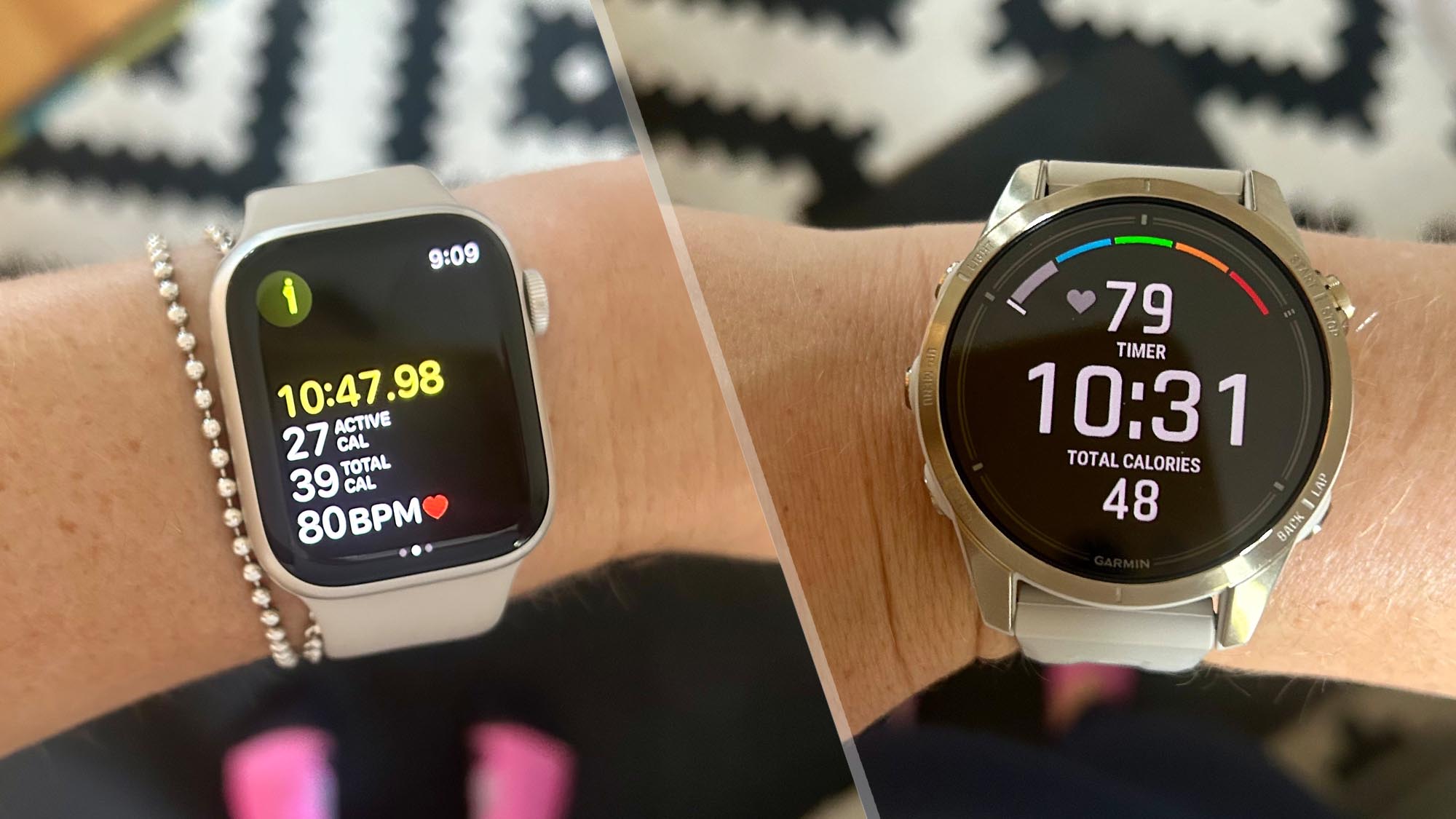I wore the Apple Watch 8 and Garmin Epix Pro for a 300-calorie workout — and was surprised by the results
Earlier this month, I put the Apple Watch Series 8 and the Garmin Forerunner 265 head-to-head in a step-counting challenge and found the Garmin to be slightly more accurate than Apple. Yet what would happen when I compared the two watches’ ability to track my calories during a workout? To find out more, I strapped both to my wrist and followed a YouTube workout that promised to burn 300 calories. The results surprised me.
One important caveat: It’s really tricky to work out which watch is more accurate when it comes to estimating how many calories you burn during a workout. Both the Apple Watch and Garmin use your personal information like heart rate, height, weight, gender, and age to make an accurate prediction.
It’s also important to note that calories aren’t the be-all and end-all, and shouldn’t be the main motivator for working out — I never look at the calorie expenditure on my watch. That said, if you are trying to lose weight, you’ll need to put yourself in a calorie deficit, and consume less calories than you burn.
How to calculate your calorie burn
The most accurate way to truly establish how many calories you burned during a workout is to establish your Basal Metabolic Rate (BMR). This is the number of calories your body needs to perform the daily activities you need to survive. It will vary from person to person, and while your age, gender, and weight can be used, there’s a margin for error. The best way to work out your BMR is to look at your lean body mass and get an accurate measurement from your doctor, or at a sports medicine center.
The best fitness trackers and the best running watches estimate your calorie burn by estimating your energy expenditure. To do this, they look at your heart rate data, respiration date, and oxygen consumption, as well as all the personal information you’ve entered into the watch (both Apple and Garmin advise updating this information when it changes for more accurate measurements). The watches will estimate your VO2 max, which is the maximum rate of oxygen the body is able to use during exercise), as you get fitter and your VO2 max increases.
What did the two watches record?
For this experiment, I selected a 20-minute standing HIIT workout for fat loss, which estimated it would burn 300 calories. Intrigued, I set up both watches and got to work. The surprising truth was that neither watch recorded anywhere near the 300-calorie mark. Here’s the data:
- Apple Watch Series 8: 78 calories burned, average heart rate: 102 bpm
- Garmin Epix Pro: 95 calories burned, average heart rate: 106 bpm
During the workout, I noticed that both watches had very similar heart rate readings, although according to Apple, I burned slightly fewer calories. Once again, it’s impossible to make solid conclusions on which is more accurate.

Intrigued, I looked back at the calorie data from when I compared the step count of the Apple Watch Series 8 and the Garmin Forerunner 265. Here’s what I found:
- Apple Watch Series 8: 4,996 steps, 2.37 miles, 201 calories burned
- Garmin Forerunner 265: 5,226 steps, 2.34 miles, 192 calories burned
As you can see, the estimated calorie expenditure here is pretty much the same, although in this instance the number was slightly higher on the Apple Watch.
What is the lesson to be learned from this experiment? Calories shouldn’t be the focus of a workout. Neither watch recorded anywhere near the 300-calorie mark the workout promised, but that’s ok. Experts stress that no watch will be 100% accurate when it comes to predicting your calorie expenditure, and instead, you should use it as a ballpark estimate.
Focusing too intensely on calories can be bad for your mental health. Instead, listen to your body, ensure you’re getting enough exercise, and follow a balanced diet. Calories can be a motivating goal for some, but don’t let burning a certain number be the reason you lace up your best running shoes, or do a workout in the gym, as they only tell part of the story.
More from Tom’s Guide
For all the latest Technology News Click Here
For the latest news and updates, follow us on Google News.
